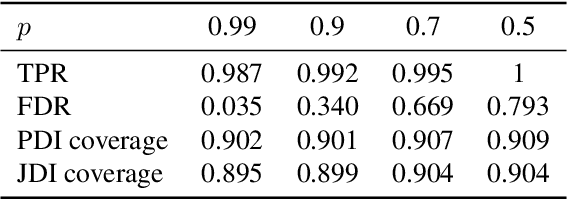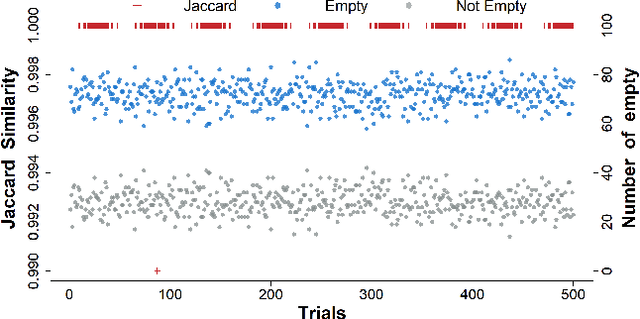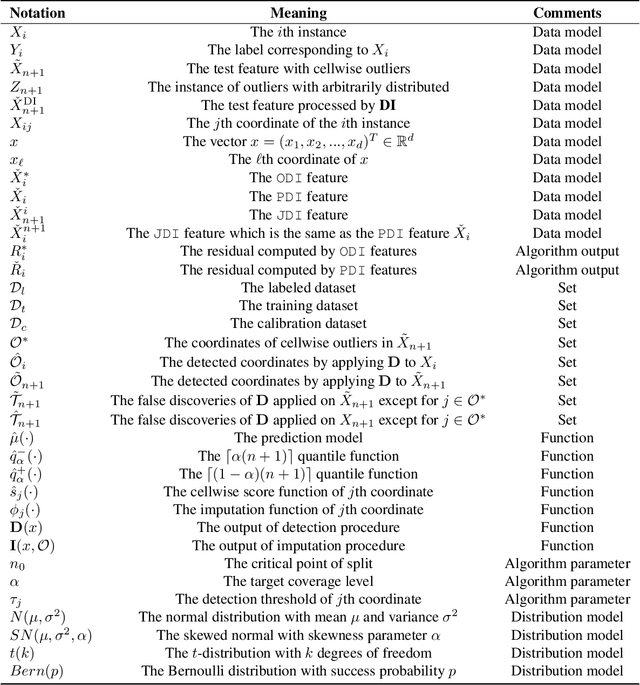Haojie Ren
Feedback-Enhanced Online Multiple Testing with Applications to Conformal Selection
Sep 03, 2025Abstract:We study online multiple testing with feedback, where decisions are made sequentially and the true state of the hypothesis is revealed after the decision has been made, either instantly or with a delay. We propose GAIF, a feedback-enhanced generalized alpha-investing framework that dynamically adjusts thresholds using revealed outcomes, ensuring finite-sample false discovery rate (FDR)/marginal FDR control. Extending GAIF to online conformal testing, we construct independent conformal $p$-values and introduce a feedback-driven model selection criterion to identify the best model/score, thereby improving statistical power. We demonstrate the effectiveness of our methods through numerical simulations and real-data applications.
ElectricSight: 3D Hazard Monitoring for Power Lines Using Low-Cost Sensors
May 10, 2025Abstract:Protecting power transmission lines from potential hazards involves critical tasks, one of which is the accurate measurement of distances between power lines and potential threats, such as large cranes. The challenge with this task is that the current sensor-based methods face challenges in balancing accuracy and cost in distance measurement. A common practice is to install cameras on transmission towers, which, however, struggle to measure true 3D distances due to the lack of depth information. Although 3D lasers can provide accurate depth data, their high cost makes large-scale deployment impractical. To address this challenge, we present ElectricSight, a system designed for 3D distance measurement and monitoring of potential hazards to power transmission lines. This work's key innovations lie in both the overall system framework and a monocular depth estimation method. Specifically, the system framework combines real-time images with environmental point cloud priors, enabling cost-effective and precise 3D distance measurements. As a core component of the system, the monocular depth estimation method enhances the performance by integrating 3D point cloud data into image-based estimates, improving both the accuracy and reliability of the system. To assess ElectricSight's performance, we conducted tests with data from a real-world power transmission scenario. The experimental results demonstrate that ElectricSight achieves an average accuracy of 1.08 m for distance measurements and an early warning accuracy of 92%.
Conformal Prediction with Cellwise Outliers: A Detect-then-Impute Approach
May 08, 2025



Abstract:Conformal prediction is a powerful tool for constructing prediction intervals for black-box models, providing a finite sample coverage guarantee for exchangeable data. However, this exchangeability is compromised when some entries of the test feature are contaminated, such as in the case of cellwise outliers. To address this issue, this paper introduces a novel framework called detect-then-impute conformal prediction. This framework first employs an outlier detection procedure on the test feature and then utilizes an imputation method to fill in those cells identified as outliers. To quantify the uncertainty in the processed test feature, we adaptively apply the detection and imputation procedures to the calibration set, thereby constructing exchangeable features for the conformal prediction interval of the test label. We develop two practical algorithms, PDI-CP and JDI-CP, and provide a distribution-free coverage analysis under some commonly used detection and imputation procedures. Notably, JDI-CP achieves a finite sample $1-2\alpha$ coverage guarantee. Numerical experiments on both synthetic and real datasets demonstrate that our proposed algorithms exhibit robust coverage properties and comparable efficiency to the oracle baseline.
CORP: A Multi-Modal Dataset for Campus-Oriented Roadside Perception Tasks
Apr 04, 2024Abstract:Numerous roadside perception datasets have been introduced to propel advancements in autonomous driving and intelligent transportation systems research and development. However, it has been observed that the majority of their concentrates is on urban arterial roads, inadvertently overlooking residential areas such as parks and campuses that exhibit entirely distinct characteristics. In light of this gap, we propose CORP, which stands as the first public benchmark dataset tailored for multi-modal roadside perception tasks under campus scenarios. Collected in a university campus, CORP consists of over 205k images plus 102k point clouds captured from 18 cameras and 9 LiDAR sensors. These sensors with different configurations are mounted on roadside utility poles to provide diverse viewpoints within the campus region. The annotations of CORP encompass multi-dimensional information beyond 2D and 3D bounding boxes, providing extra support for 3D seamless tracking and instance segmentation with unique IDs and pixel masks for identifying targets, to enhance the understanding of objects and their behaviors distributed across the campus premises. Unlike other roadside datasets about urban traffic, CORP extends the spectrum to highlight the challenges for multi-modal perception in campuses and other residential areas.
CAS: A General Algorithm for Online Selective Conformal Prediction with FCR Control
Mar 12, 2024Abstract:We study the problem of post-selection predictive inference in an online fashion. To avoid devoting resources to unimportant units, a preliminary selection of the current individual before reporting its prediction interval is common and meaningful in online predictive tasks. Since the online selection causes a temporal multiplicity in the selected prediction intervals, it is important to control the real-time false coverage-statement rate (FCR) to measure the averaged miscoverage error. We develop a general framework named CAS (Calibration after Adaptive Selection) that can wrap around any prediction model and online selection rule to output post-selection prediction intervals. If the current individual is selected, we first perform an adaptive selection on historical data to construct a calibration set, then output a conformal prediction interval for the unobserved label. We provide tractable constructions for the calibration set for popular online selection rules. We proved that CAS can achieve an exact selection-conditional coverage guarantee in the finite-sample and distribution-free regimes. For the decision-driven selection rule, including most online multiple-testing procedures, CAS can exactly control the real-time FCR below the target level without any distributional assumptions. For the online selection with symmetric thresholds, we establish the error bound for the control gap of FCR under mild distributional assumptions. To account for the distribution shift in online data, we also embed CAS into some recent dynamic conformal prediction methods and examine the long-run FCR control. Numerical results on both synthetic and real data corroborate that CAS can effectively control FCR around the target level and yield more narrowed prediction intervals over existing baselines across various settings.
EdgeCalib: Multi-Frame Weighted Edge Features for Automatic Targetless LiDAR-Camera Calibration
Oct 25, 2023Abstract:In multimodal perception systems, achieving precise extrinsic calibration between LiDAR and camera is of critical importance. Previous calibration methods often required specific targets or manual adjustments, making them both labor-intensive and costly. Online calibration methods based on features have been proposed, but these methods encounter challenges such as imprecise feature extraction, unreliable cross-modality associations, and high scene-specific requirements. To address this, we introduce an edge-based approach for automatic online calibration of LiDAR and cameras in real-world scenarios. The edge features, which are prevalent in various environments, are aligned in both images and point clouds to determine the extrinsic parameters. Specifically, stable and robust image edge features are extracted using a SAM-based method and the edge features extracted from the point cloud are weighted through a multi-frame weighting strategy for feature filtering. Finally, accurate extrinsic parameters are optimized based on edge correspondence constraints. We conducted evaluations on both the KITTI dataset and our dataset. The results show a state-of-the-art rotation accuracy of 0.086{\deg} and a translation accuracy of 0.977 cm, outperforming existing edge-based calibration methods in both precision and robustness.
TrajMatch: Towards Automatic Spatio-temporal Calibration for Roadside LiDARs through Trajectory Matching
Feb 04, 2023



Abstract:Recently, it has become popular to deploy sensors such as LiDARs on the roadside to monitor the passing traffic and assist autonomous vehicle perception. Unlike autonomous vehicle systems, roadside sensors are usually affiliated with different subsystems and lack synchronization both in time and space. Calibration is a key technology which allows the central server to fuse the data generated by different location infrastructures, which can deliver improve the sensing range and detection robustness. Unfortunately, existing calibration algorithms often assume that the LiDARs are significantly overlapped or that the temporal calibration is already achieved. Since these assumptions do not always hold in the real world, the calibration results from the existing algorithms are often unsatisfactory and always need human involvement, which brings high labor costs. In this paper, we propose TrajMatch -- the first system that can automatically calibrate for roadside LiDARs in both time and space. The main idea is to automatically calibrate the sensors based on the result of the detection/tracking task instead of extracting special features. More deeply, we propose a mechanism for evaluating calibration parameters that is consistent with our algorithm, and we demonstrate the effectiveness of this scheme experimentally, which can also be used to guide parameter iterations for multiple calibration. Finally, to evaluate the performance of TrajMatch , we collect two dataset, one simulated dataset LiDARnet-sim 1.0 and a real-world dataset. Experiment results show that TrajMatch can achieve a spatial calibration error of less than 10cm and a temporal calibration error of less than 1.5ms.
 Add to Chrome
Add to Chrome Add to Firefox
Add to Firefox Add to Edge
Add to Edge